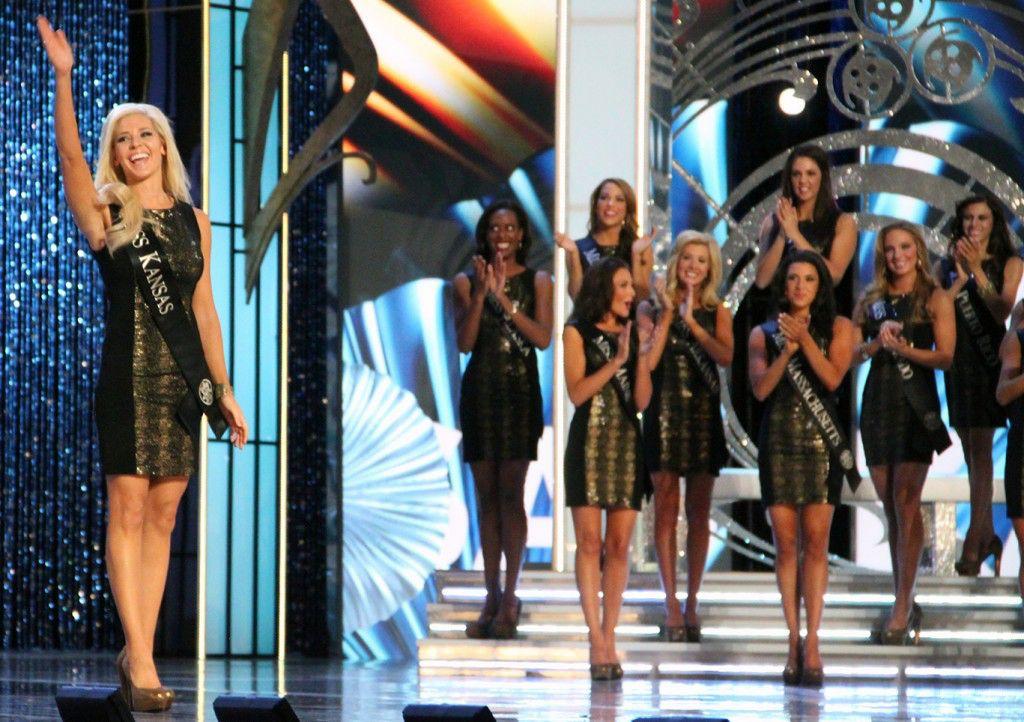She speaks three languages: English and Russian, which she learned at home, and Spanish, which she learned in school. She’s a graduate of Hofstra University Honors College, having received a diploma in her triple majors of Political Science, Global Studies and Geography, and she is looking to attend law school. She’s a spokeswoman for an anti-domestic violence campaign and a victim of domestic violence herself. Plus, she sings. Here she comes — she’s the newly crowned Miss America 2015 Kira Kazantsev.
Americans have been watching the Miss America pageant and others like it on television since the first televised beauty pageant in 1959. Featuring beautiful, slightly robotic women traipsing around in swimsuits and tiaras, the beauty competition world seemed distant to the average viewer. More recently, reality TV shows such as TLC’s “Toddlers and Tiaras” have given people a glimpse into this strange world of fake teeth and spray tans, although overall opinions are largely negative. Whether you associate them with robots or screaming 6-year-olds, the world of beauty pageants is largely misunderstood and constantly critiqued.
The Miss America Pageant was founded in 1921 in Atlantic City, New Jersey. Originally dubbed the “Inter-City Beauty” Contest, the eight contestants were judged on appearance and personality, and they were expected to be the embodiment of the ideal American woman. Today, the contest is a scholarship program, and winners receive money for their educations, often in large sums. Contestants are judged 15 percent on Lifestyle and Fitness in Swimsuit, 20 percent on Evening Wear, 35 percent on talent, 25 percent on Private Interview and 5 percent on their response to an on-stage question.
“Miss America is a role model to young and old alike, and a spokesperson, using her title to educate millions of Americans on an issue of importance to herself and society at large,” the Miss America Organization website states.
The fact that the incentive to win this competition is based in scholarship is admirable. Women cannot compete in these competitions without having educational goals, and many of the contestants are far more impressive than that. Additionally, they have to promote and do service for a cause they believe in. When successful in pageants, these women not only improve their own reputations, but also increase awareness for important charities.
“The Miss America Organization and others like it are promoting educated women who are standing up for problems they believe in,” said Katherine Rushlau, a senior at Emerson College and Miss Maine’s National Sweetheart 2014. “These organizations are providing an outlet for them to express themselves. It’s not just a swimsuit competition anymore. These competitions are giving women opportunities to advance their careers and their educations while promoting great causes.”
The advantages that come from competing in pageants are significant. The women are accomplished, educated and through the publicity of these pageants, on the way to achieving their goals. The question is, why is it still necessary for them to strut around in swimsuits and evening gowns to gain these benefits?
In 1968, 400 feminists of the New York Radical Women protested the Miss America Pageant in a legendary women’s liberation demonstration. Citing the pageant as a source of oppression, they sought to call awareness to the sexism of the pageant, which was then judged largely on physical attributes.
“Men are all too happy to see us competing with each other over who’s the sexiest,” said Carol Hanisch, leader of the 1968 Miss America protest, in a 2003 interview with Fran Luck for the Joy of Resistance radio show. “[Pageants] help keep women in their place…I think it’s true that all of us have to play the game to some degree to even survive in the world…but to take the trappings of our oppression and try to redefine them as liberating I think is really reactionary.”
Besides the superficiality of judging women on appearance, there are some other issues with the Miss America pageants. With the costs of evening gowns, swimsuits, hair and makeup alone easily surmounting thousands of dollars, most women must be somewhat privileged to compete. Sure, they win money for their education, but the costs of participating are probably about equal to what they win. Furthermore, people who can afford to participate are probably not as wanting for scholarship money as others.
While Miss America has taken steps to modernize with the inclusion of charitable platforms and promotion of scholarship, the organization has existed for years on the tradition of rewarding women for being beautiful. Because the organization is so old and well known, it is understandable they would want to maintain the integrity of their competition, but holding onto the antiquated dream of perfect beauty renders the pageant a modern-day dinosaur.
It is undeniable that the Miss America competition has the potential to empower women, but if that empowerment requires being judged on facial features, hair and let’s face it, chest size, perhaps the competition could use some reforming.






















































































































